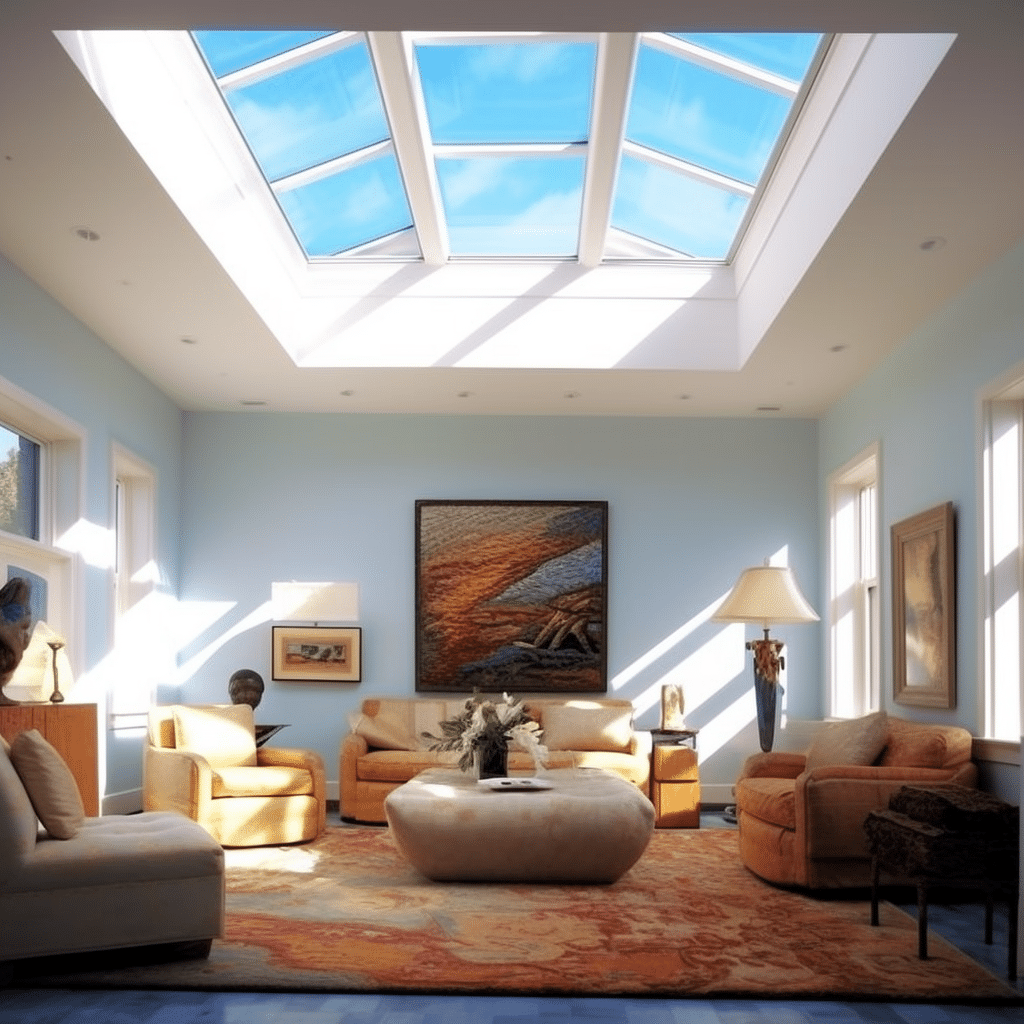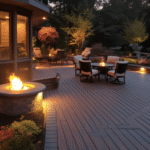.jpg)
Table of Contents
Introduction to Skylight Installations
Skylight installations — a stylish pick for homeowners looking to bring natural light into their homes. They brighten up a room, save energy, and add a unique architectural element. Plus, improved ventilation with fresh air entering and leaving the room, creating a healthier, comfier environment.
When selecting skylight installations, think about the type that fits your needs. Fixed skylights offer natural light and a certain area accentuation. Ventilated skylights increase functionality with fresh air circulation. And tubular skylights are ideal for small rooms or areas with limited ceiling space, capturing sunlight through a tube system.
If you’re considering skylight installations, keep these tips in mind:
- Consider orientation and placement carefully. South-facing offers maximum sunlight throughout the day, while north-facing ensures consistent brightness without too much heat gain.
- Install blinds or shades to control the amount of light entering the room, and to prevent summer heat buildup.
Benefits of Skylight Installations
Skylights: a perfect way to invite sunshine into your home and simultaneously prove that vampires aren’t real! Enjoy a multitude of benefits from a skylight installation.
For instance, natural light fills your rooms with warmth and cheer. Plus, it reduces energy consumption and costs.
Also, some skylights can be opened to let fresh air in, improving air quality.
Choose from various designs and sizes to match your home decor. Skylights can be a beautiful focal point in any room, adding charm and sophistication.
Don’t miss out on these amazing advantages – take the plunge and experience the transformative power of natural light!
Types of Skylights
Skylights are great for modern, well-lit living spaces. With many types available, each with its own advantages, it’s important to know your options. Let’s find out about the Types of Skylights:
- Fixed Skylights: Stationary and can’t be opened. Provide natural light and views, plus insulation and energy savings. Perfect for high ceiling rooms or areas needing more light.
- Ventilating Skylights: Can be opened and closed manually or electronically. Offer ventilation and remove odors, heat, and humidity while letting in fresh air. Perfect for kitchens, bathrooms, or rooms needing air circulation.
- Tubular Skylights: Great for small spaces or places without roof access. Use reflective tubes to capture and disperse natural light. Energy efficient and provide good illumination even on cloudy days.
- Sun Tunnels: Like tubular skylights, they bring natural light into dark places. Reflective materials redirect sunlight and minimize heat transfer. Cost-effective solution for brightening up confined areas.
Fixed skylights make a focal point in a room. They also have built-in electronic sensors that can close them when it rains or wind speeds get too high. Now choose the perfect skylight for your home! Transform your living space into a vibrant and inviting atmosphere full of natural light. But be prepared for the extra sunlight to expose the dust and cobwebs in your love life!
Factors to Consider Before Installing Skylights
Installing skylights is a key choice to make for any house, to improve both its looks and usability. Prior to making this decision, there are some factors to consider for an effective installation.
- Location: Be sure to pick the spot carefully, considering the direction of sunlight and its effect on temperature and glare.
- Size: Figure out the perfect size, based on the area and desired amount of natural light.
- Style: Choose the style that best fits the look of the space, such as fixed, vented, or tubular.
- Energy Efficiency: Look for skylights with high energy efficiency ratings to reduce heat gain and loss.
- Installation Cost: Get a sense of the budget for both the skylight and professional installation.
Insulation and waterproofing should be done properly too, to prevent leaks and maintain energy efficiency. To get the most out of the project, hire a specialist in skylight installation for help.
Pro Tip: To get better energy efficiency, add blinds or shades to the skylight for extra insulation during extreme weather.
Skylight Installation Process
When it comes to skylight installations, the process can be tricky. Here’s what you should know:
- Preparation: Figure out the best spot for your skylight. Think sunlight and style. Measure and mark the area.
- Roof Inspection: Look for any damage that could affect the skylight. Repair any issues before continuing.
- Cutting and Framing: Cut an opening in the roof and frame it for the skylight. Follow the manufacturer’s instructions for precise measurements.
- Installation: Place the skylight in the opening and fasten it with hardware. Seal around the edges to avoid leaks.
- Finishing Touches: Inside and outside, seal gaps, paint, and clean debris.
For a successful installation, here’s what else you should do:
- Safety First: Wear protective gear, work with a partner if needed, and secure yourself on ladders or scaffolding.
- Research and Professional Assistance: Learn local rules and regulations. If unsure, get help from a pro.
- Regular Maintenance: Inspect your skylight often for cracks or leaks. Clean the glass for clarity and sunlight.
Follow these steps and you’ll have a beautiful skylight that brings lots of natural light into your home – without having to invite bats!
Maintenance and Care for Skylights
Skylights bring light and beauty to any space. To keep them working and looking great, proper maintenance and care is key! Here are some top tips:
- Cleaning: Clean the glass and frames with a mild solution and avoid harsh materials that can scratch.
- Inspecting: Check for cracks, leaks or discoloration and address them quickly.
- Gutter clearance: Clear out any debris from the gutters around the skylight.
- Sealant checking: Check sealants for wear or damage and replace any that need it.
Remember each type and material requires different care instructions. For example, plastic skylights can scratch easily if cleaned with abrasive materials.
It’s fascinating to think skylights have been used for centuries. The ancient Romans created “compluviates” to let sunlight into their homes. Nowadays, we have much more advanced skylight designs.
By following the right maintenance and care, you can enjoy natural light and keep your skylights working and looking beautiful for years. Skylights add a bit of extra excitement to your home!
Conclusion and Final Thoughts
When it comes to skylight installation, there are several factors to consider. Firstly, the type of skylight affects a space’s aesthetic and performance. Proper installation and insulation ensure optimal efficiency and longevity. Cleaning and maintenance are essential too. By following these guidelines, homeowners can enjoy the advantages of skylights.
Natural light distribution in a house is crucial. Strategically placed skylights brighten up dark areas, creating an atmosphere of spaciousness. The size and shape should match the building, providing enough light without glare. Consulting with a professional is advised.
Lastly, adjustable blinds or shades allow for light control, giving flexibility while still enjoying natural light.


